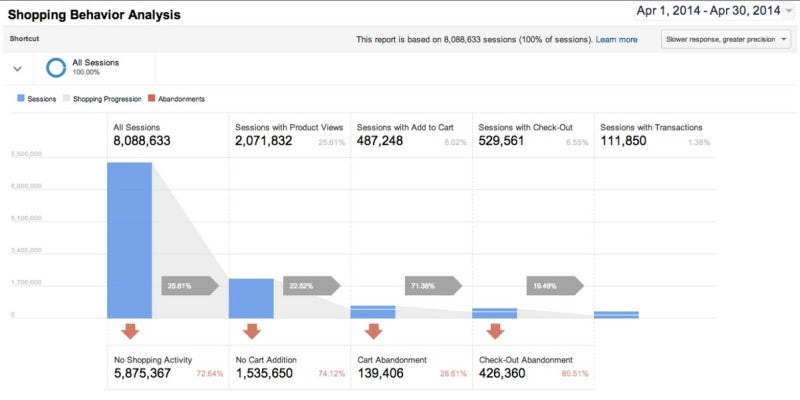In March 2014, Shopify launched its 5th Annual Build A Business Competition. Over a few short years, the competition has helped create over 36,000 new businesses that have sold over $180 million in products.
As Shopify Partners, we have the unique opportunity to be an integral part of the success stories of fast growing ecommerce businesses. Oh yeah – the experts who help launch the winners' shops will take home $10,000 USD. :)
In this post, I will share some of the proven strategies that will help us take our clients' business to the next level to succeed in the highly competitive Build A Business competition.
These are the best practices from our peers who have previously won the competition, and our own experiences working with fastest growing stores like Bolder Band, Shinesty and Pop Chart Lab.
You might also like: How To Create PPC Campaigns For Your Clients' Holiday Shopify Stores
1. Identify clients with high growth potential
As a Shopify Partner, our relationship with our client(s) is more than just a transactional relationship. We are now a core part of their business's growth story.
The first thing you've got to do is identify clients with high growth potential. Among your client base (who have launched on/before June 1 2014 as the competition requires), find the entrepreneurs who have an actionable vision to grow a multi-million dollar ecommerce business within months.
Such businesses generally have one or multiple of the following characteristics:
- Raised money through crowdfunding campaigns on KickStarter, Indiegogo or such
- Product(s) are targeted towards a niche but scalable segment
- Identified a trend in the market and has a product(s) which can ride on it
Check out this 2013 Kickstarter campaign from Polar Pens (2014 winners). All success is traceable.

Once you find your match, it is important to initiate a continuous engagement.
Here are some key learnings from our relationship with Bolder Band – one of the winners in 2014.
Bolder Band installed our app to automate their accounting in March 2014, just five months after they launched their store. They were getting up to 100 orders a day! Naturally, it was getting hard for them to manage their accounting manually.
We felt a sense of ownership that if our app does its job, it will save them a lot of time that they can instead spend on activities like sales, marketing and customer support. We were really early in our business (ZapStitch was launched in February 2014). Though the initial customer feedback was awesome, there were some bugs in the app.
We prioritized the feedback that we received from Steve, CFO at Bolder Band. We improved the app continuously and, in effect, enabled the client to free up time and sell more.
With each fix we made, we would get an acknowledgement mail or a phone call with a smile. He often pushed us too, and rightly so.
The one major takeaway for us all is to take ownership of the clients' growth and to continuously engage with them. No matter if you have an app or a service, you must contribute to the end dollar.
2. Build and use apps to automate
When running an eCommerce business, the one resource merchants don't have enough of is time. Your clients need to focus everyday on increasing sales, providing stellar customer service and to ensure order fulfilment.
As they say, if you want to grow, you need to automate.
Build A Business winners from all previous editions have acknowledged the contribution that apps and integrations have made. An average fast growing store uses 6+ apps/integrations.
The Shopify App Store is full of hundreds of free and paid apps to automate processes across functions like email marketing, conversion optimization, social media marketing, live chat, accounting and more.
If you don’t find an app/integration to do what you want to, build one.
MVMT Watches (one of the winners from 2014) worked with Above Market to integrate their Facebook promotions and affiliate campaigns with their website. Within a few months, their Likes shot up from 8,000 to 229,000!

To get you started, here are the top 7 storefront apps used by Build A Business winners in 2014.
3. Plan and launch campaigns to align with holidays & events
The rules of the Build A Business competition are pretty clear: "Open your store, enter the competition – start selling."
The goal here is to grow, and grow fast. To break some sales records, you need to work with clients to launch and execute strategic marketing campaigns.
One of the proven ways to ramp up sales is to align your marketing campaigns around key events and holidays. If your clients have utilized the holiday season in late 2014, well done! If not, don't worry – 2015 is wide open. Click here for a printable calendar of all holidays and events (credit: Bizetto)
Google Trends is a great tool to observe the trends in one's target segment, and design campaigns around them.
In November of 2014, Shinesty – an ecommerce store built on Shopify – went viral across USA. Their entire season's stock of 'Ugly Christmas Sweater Suit' sold out in just six hours!
It turned out that a unique social media campaign launched just before Cyber Monday was one of the most significant factors behind their explosive growth.
Below is a quick glimpse at their viral campaign:

Here's a case study sharing all that went behind Shinesty’s viral campaign
You might also like: Holiday Buyer Psychology — 5 Things You and Your Clients Need to Know
4. Measure everything
You will put a lot of effort into designing the most optimized site for your client. The homepage has to be super clean; the product catalog should be easy to navigate; product photography needs to be stellar; product information is supposed to be chunked.
But even if you get all of the above design elements right, success isn't guaranteed. Often, the missing ingredient is proper measurement and iterations.
Make sure you work with your clients to build the initial analytics reports to track detailed performance of existing traffic. Iterate on designs rapidly as you get actionable analytics and follow the lean principles of Build, Measure and Learn.
Here are four of the most crucial events that you should track in Google Analytics to measure and understand customer journeys.
i) Shopping behavior
This lets you evaluate the strengths and weaknesses of the whole purchase funnel. With Google's new 'Enhanced Analytics' you can customize reports to fit your specific checkout process. The views and actions are tracked across product views, add to cart etc.

ii) Site search results
This is perhaps the best place to start optimizing your SEO and keywords strategy. It's all about showing the right product to the right buyer at the right time. Get actionable insights on what products to showcase in which categories.
iii) Product performance
This provides a detailed report on how the products are performing on both sales numbers and shopping behavior.
iv) Performance of offers and discounts
An affiliate code report will track transactions, revenue and average order value linked to affiliate sites and order coupons. Track sales generated from internal banners and analyze views and click-through-rates.
5. Collaborate with peer Shopify Experts and Partners
Often, your clients' requirements can't be met by you alone. There's so much to do! Design, branding, social media marketing, store setup and more.
Thankfully, Shopify has built one of the largest and most qualified networks of partners and experts in the eCommerce industry. All you have to do is reach out.
Here are some best practices to learn and collaborate with the larger Shopify Partner community:
- If you are a Shopify Partner developing apps, make sure you have proper documentation and stellar customer support. It helps clients and partners implement third-party apps.
- We all love the Shopify Partners Blog. Some of the top partners have their own blogs as well. They have case studies and best practices from their specific domain name. Some of the best actionable blogs are from WeMakeWebsites, Shopify Masters, Yotpo, and Justuno. We have our own blog too at ZapStitch. We share actionable strategies coming straight from the fast-growing Shopify stores like Shinesty, Veestro and more.
- Document your success stories and publish when you can. As you work with top clients, develop cases on what worked for you and your client. Not only does it help your peers, but you too can build on it as you look to repeat your success with multiple clients.
- Make sure you are regularly engaged in the Shopify Forums – easily the top source for prospective clients, beta clients and a place to ask questions to peers.
Hope you got some actionable insights to lead your clients to glory in the Build A Business competition.
Have any best practices which work for you when working with clients? Got questions? Leave a comment below.
Read more
- Email Deliverability: 5 Ways to Build a Strong Sender Reputation
- 3 Ways to Use a Phone Number to Boost Your Client’s Business
- 11 Design Interview Questions and How to Master Them
- 10 Things I Learned About UX By Being Drunk
- Learning How to Code, the Long Way Around
- Raise Prices at Your Agency with this Step-by-Step Approach
- Build Your Ecommerce Business: Livestream
- 4 Conferences You Should Attend
- Grow Your Business With This Free Book
- 7 Ways to Create an Amazing Customer Experience for Your Clients’ Ecommerce Stores

